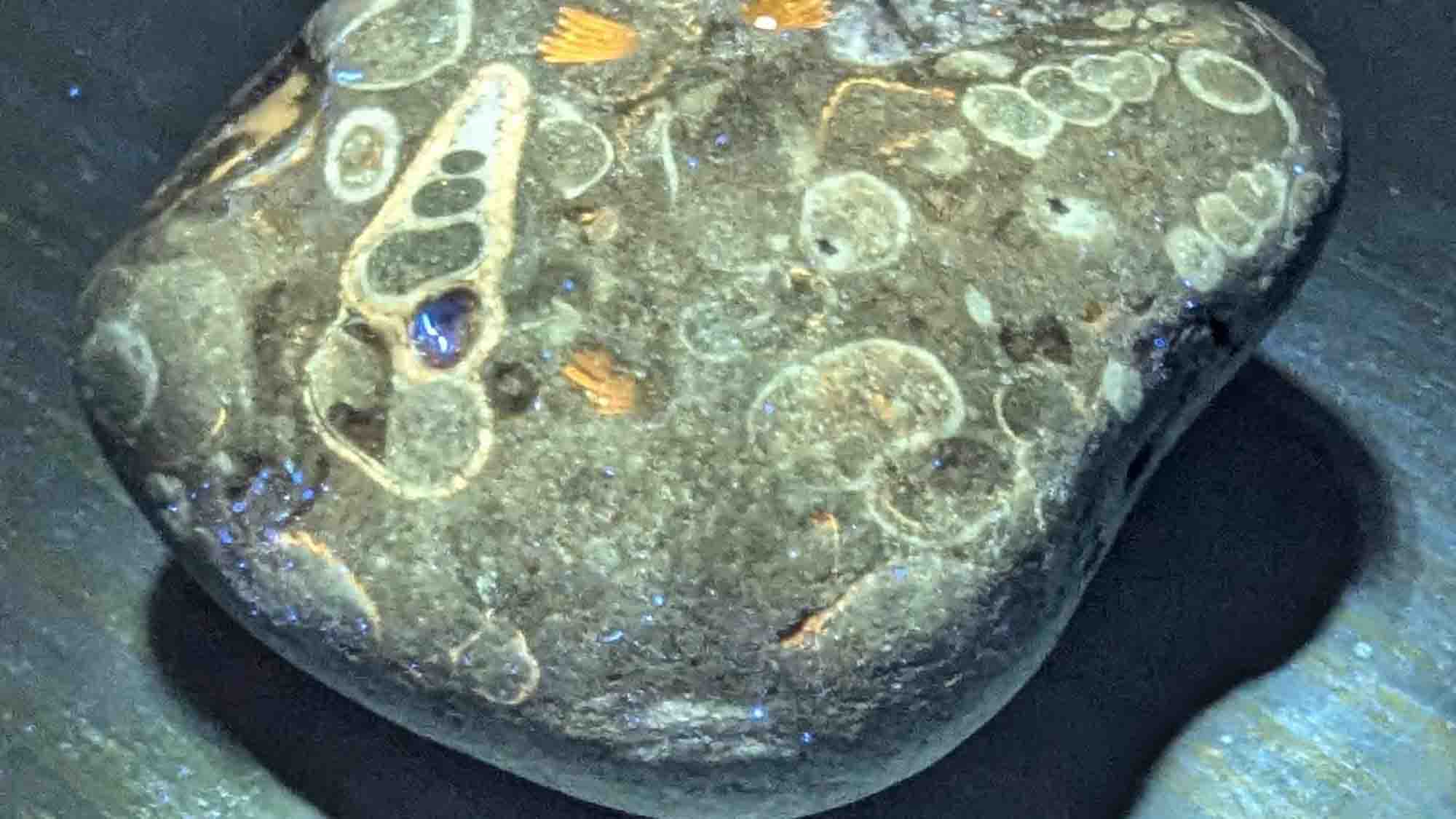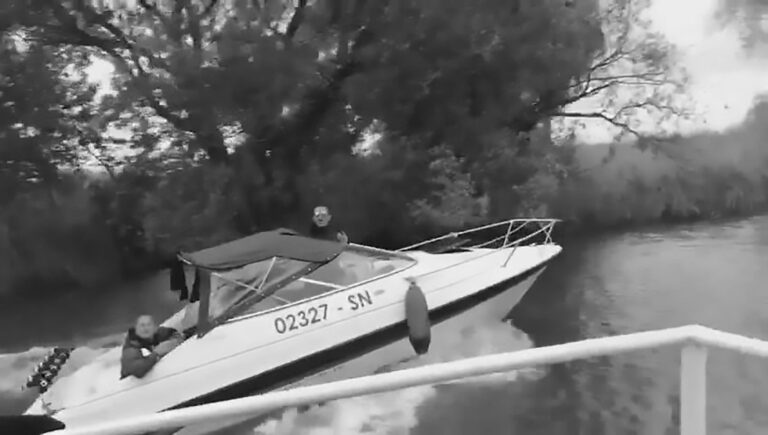A woman and her eight-year-old son have stumbled upon a grey stone dating back millions of years that glows under UV light while taking a stroll on a beach.
Sarah Zech, 30, and her son Marco were walking along the Baltic Sea shore near Niendorf, Schleswif-Holstein State, Germany, when they suddenly noticed the grey stone.
Sarah told Newsflash in an interview: “We found the stone during a walk at Niendorf Beach. Since my son Marco, aged 8, is an enthusiastic fossil collector, we always keep an eye out.”
After spotting three brachiopod prints on the stone – fossilised remains of ancient marine creatures with hard shells from hundreds of millions of years ago – they couldn’t resist taking it home to examine it further.
She said: “At first, we only noticed the three obvious brachiopod prints on this rather unremarkable stone. These were a good reason to take the stone with us.”

Once they got home, the 30-year-old mother used a UV lamp to see if the stone’s surface concealed any additional details.
Sarah said: “I got the UV lamp because I read a tip in a mineral and fossil group on Facebook that you can discover a lot with it.”
When the two illuminated the stone with a UV lamp, it revealed many fossilised residues in various colours, shapes, and patterns.
The mum said: “The experiment with the UV lamp surprised us with a great variety of fossil residues.”
Commenting on the find, Geotanium Museum geologist Johannes Jannsen said: “This is indeed quite a remarkable find.
“It’s a limestone from the Silurian period, about 420 million years old. The stone contains several fossils, including brachiopods, tower snails, and the chambered shell of a cephalopod called Orthoceras.

“The fossils have a calcite shell that fluoresces yellow-orange under UV light. These limestones are found on the Baltic Sea floor near the Swedish island of Gotland, which was once a large coral reef during the Silurian period.
“The animals lived on the sea floor at the base of this reef. Eventually, the Ice Age brought this find to our Baltic coast with the glaciers.”
To find out more about the author, editor or agency that supplied this story – please click below.
Story By: Georgina Jedikovska, Sub-Editor: Georgina Jedikovska, Agency: Newsflash
The Ananova page is created by and dedicated to professional, independent freelance journalists. It is a place for us to showcase our work. When our news is sold to our media partners, we will include the link here.




